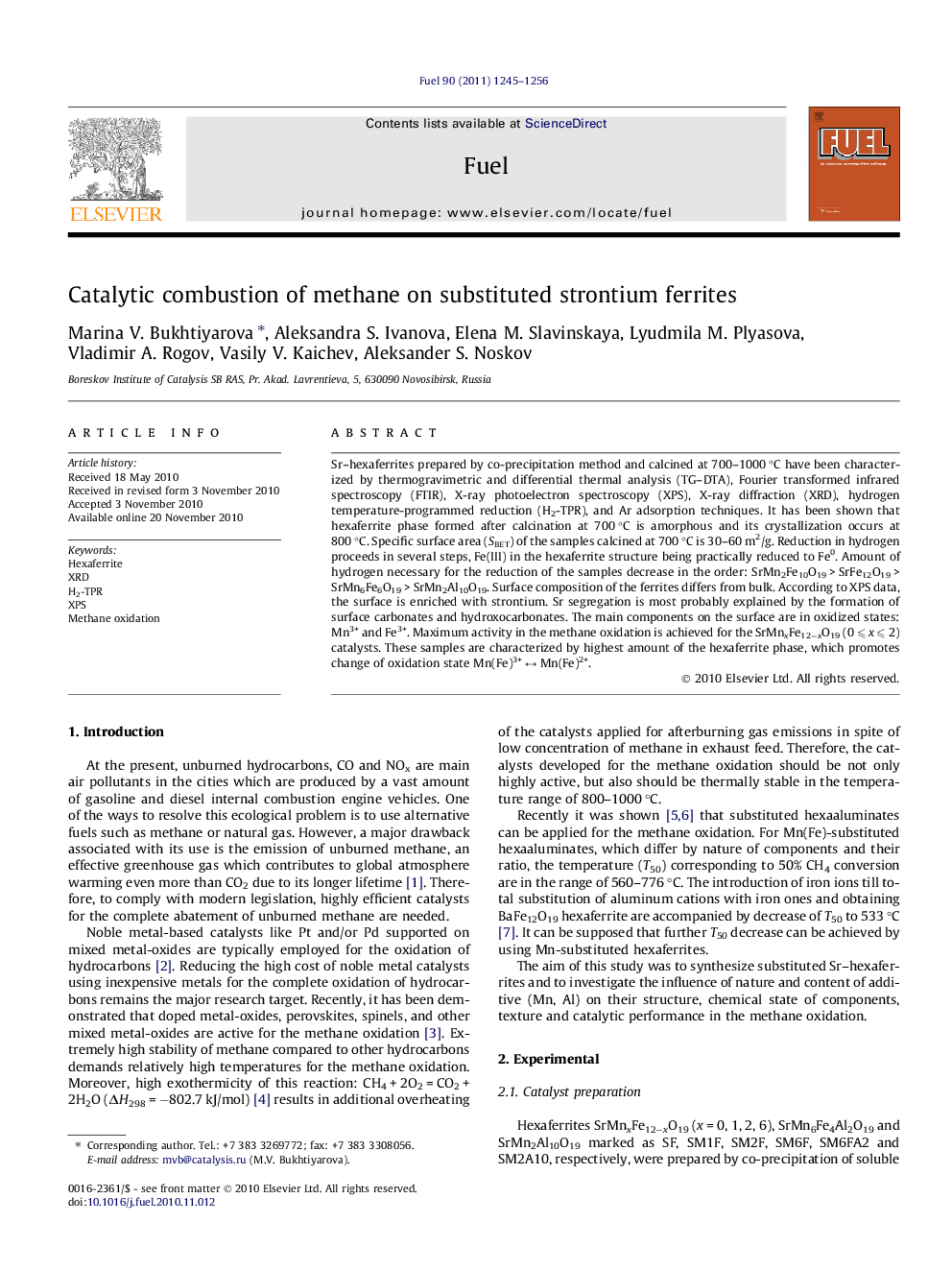| کد مقاله | کد نشریه | سال انتشار | مقاله انگلیسی | نسخه تمام متن |
|---|---|---|---|---|
| 10272710 | 461190 | 2011 | 12 صفحه PDF | دانلود رایگان |
عنوان انگلیسی مقاله ISI
Catalytic combustion of methane on substituted strontium ferrites
دانلود مقاله + سفارش ترجمه
دانلود مقاله ISI انگلیسی
رایگان برای ایرانیان
کلمات کلیدی
موضوعات مرتبط
مهندسی و علوم پایه
مهندسی شیمی
مهندسی شیمی (عمومی)
پیش نمایش صفحه اول مقاله

چکیده انگلیسی
Sr-hexaferrites prepared by co-precipitation method and calcined at 700-1000 °С have been characterized by thermogravimetric and differential thermal analysis (TG-DTA), Fourier transformed infrared spectroscopy (FTIR), X-ray photoelectron spectroscopy (XPS), X-ray diffraction (XRD), hydrogen temperature-programmed reduction (H2-TPR), and Ar adsorption techniques. It has been shown that hexaferrite phase formed after calcination at 700 °С is amorphous and its crystallization occurs at 800 °С. Specific surface area (SBET) of the samples calcined at 700 °С is 30-60 m2/g. Reduction in hydrogen proceeds in several steps, Fe(III) in the hexaferrite structure being practically reduced to Fe0. Amount of hydrogen necessary for the reduction of the samples decrease in the order: SrMn2Fe10O19 > SrFe12O19 > SrMn6Fe6O19 > SrMn2Al10O19. Surface composition of the ferrites differs from bulk. According to XPS data, the surface is enriched with strontium. Sr segregation is most probably explained by the formation of surface carbonates and hydroxocarbonates. The main components on the surface are in oxidized states: Mn3+ and Fe3+. Maximum activity in the methane oxidation is achieved for the SrMnxFe12âxO19 (0 ⩽ x ⩽ 2) catalysts. These samples are characterized by highest amount of the hexaferrite phase, which promotes change of oxidation state Mn(Fe)3+ â Mn(Fe)2+.
ناشر
Database: Elsevier - ScienceDirect (ساینس دایرکت)
Journal: Fuel - Volume 90, Issue 3, March 2011, Pages 1245-1256
Journal: Fuel - Volume 90, Issue 3, March 2011, Pages 1245-1256
نویسندگان
Marina V. Bukhtiyarova, Aleksandra S. Ivanova, Elena M. Slavinskaya, Lyudmila M. Plyasova, Vladimir A. Rogov, Vasily V. Kaichev, Aleksander S. Noskov,